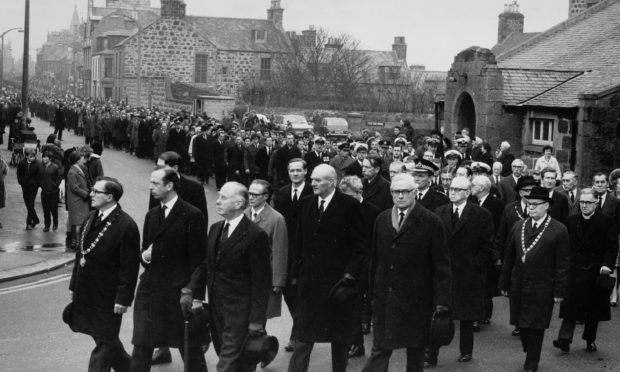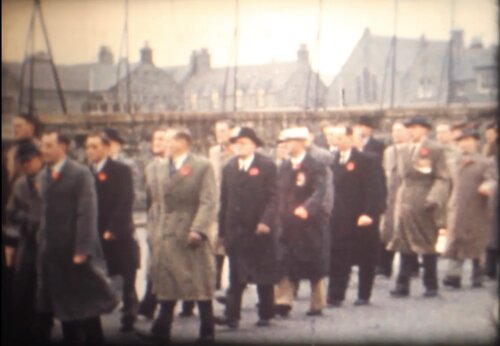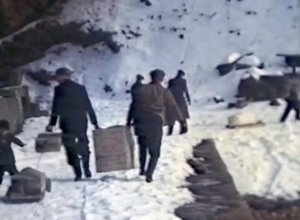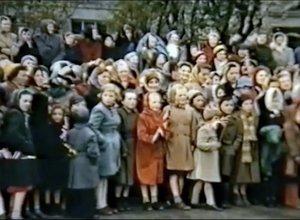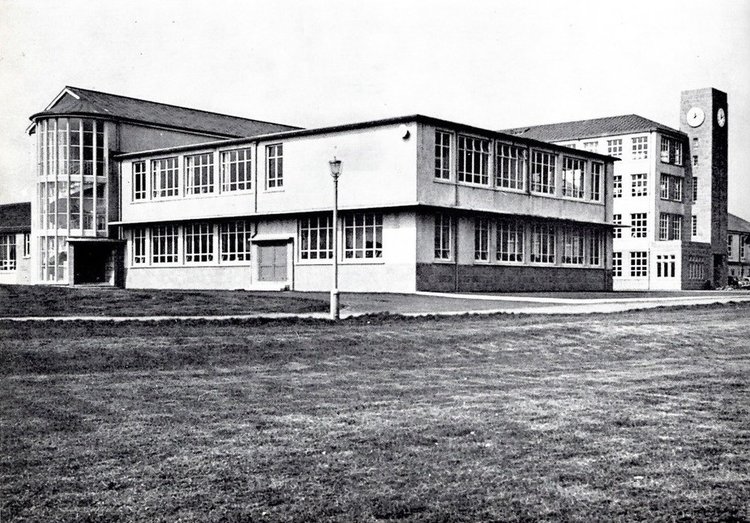It’s a treasure trove of work which brings the bygone Broch back to life.
And now, a north-east graduate, who has created a poignant archive of Fraserburgh on Film, has been shortlisted for an international award.
Andrew Davidson, a former student at Robert Gordon University, collated the material from many different sources in the north-east community and his efforts have led to him being nominated for the most distinguished student work at the Digital Preservation Awards, which were scheduled for Luxembourg next month.
The evocative array of short films highlights everything from festivities to funerals, royal visits to rowing competitions and beach parties to bothy ballads, and has already gained global attention.
RGU professor Peter Reid said: “Andrew has done a phenomenal amount of work and produced what is quite possibly the best film archive of any town in Scotland.
“There are some amazing gems on the site including lovely colour footage such as a trip to Pennan by sea when, in 1947, the village was cut off by snow.
“This is a very important contribution to the cultural heritage of the north-east and, indeed, to the social history of Scotland as a whole.”
Mr Davidson told the Press and Journal that he had been humbled by the responses from local people and visitors to the film site from all across the world.
Indeed, he is constantly being contacted by members of the public with fresh nuggets to augment the impressive collection.
And although the award ceremony is being held online because of Covid-19 restrictions, he revealed he has added significant extra material to the project which was launched at the start of the year.
He said: “The winners are announced on November 5, so we will have to see what happens, but it’s incredible just to be nominated.
“I am still getting a lot of positive feedback for Fraserburgh on Film and I’ve had visitors from all over the world who have really enjoyed visiting the site.
“There have been also been some interesting things to come out from the community, including a story involving the Queen Mother and someone’s granny in the crowd next to her in one of the films.
“I received funding from the Doric Board in the last round of New Year funding to hold an exhibition in the Broch and, although that is on hold for now, I am planning to do it when restrictions permit.
“I also won the CILIP Scotland medal [from the UK’s library and information association] and was asked to present the archive at the conference which has now been moved to the end of the month in the form of a digital event.
“With this DPC award, I was supposed to have been attending the ceremony in the new National Library of Luxembourg next month.
“So I suppose that doing it on Zoom in my front room won’t be the same. But everybody is in the same position at the moment.”
One of the most intriguing sections of Mr Davidson’s initiative is entitled Fraserburgh at War and demonstrates the prominent role the port played during the hostilities between 1939 and 1945.
Mr Davidson added: “The young men of the town were fighting across Europe. RAF Fraserburgh was situated on the outskirts, and there was a branch of the home guard and the Air Training Corps.
“Then you had the presence of a munitions factory and the fact that Fraserburgh was known as ‘Little London’ on the account of the town being heavily bombed in air raid attacks, so that every resident was affected in some way by conflict.
“The voices and images tell the stories from the north-east in the very words spoken and the images created at the time, by the many people who lived and worked in the area over the years.”
The site also recounts how Fraserburgh became the first location of an RNLI lifeboat station in Scotland from 1858.
The voices and images tell the stories from the north-east in the very words spoken and the images created at the time, by the many people who lived and worked in the area over the years.”
Throughout the 20th century, the town was forced to respond to a series of terrible tragedies with many members of the lifeboat crew being lost in incidents in 1919, 1953 and 1970.
New boats were launched and their naming ceremonies were caught on film, acting as lasting tributes to the importance of the service in a town.
The project conveys how, in September 1962, Fraserburgh Academy was officially opened by HRH Princess Margaret – who was accompanied by Lord Snowdon.
However, although it already contains an abundant amount of material, the archive is an ongoing venture and Mr Davidson said this week he is keen for the public to get involved in adding to it.
He said: “We will also accept donations of films featuring Fraserburgh and the surrounding areas to help build the archive and all formats are accepted.”
The films can be watched at www.fraserburghonfilm.com
The full list of award finalists is at: www.dpconline.org/events/digital-preservation-awards/the-finalists
REACHING A WIDER AUDIENCE
Andrew Davidson has worked tirelessly on the task of bringing his Fraserburgh on Film venture to fruition.
The works have a poignancy and convey a genuine sense of the community coming together in times of triumph and tragedy and Mr Davidson has shown a huge amount of imagination and enterprise to bring the venture to fruition.
But he has also paid special tribute to Broch stalwart, Jim Taylor, whose films feature prominently in the new archive.
He said: “I can’t stress enough the importance of his work and I really think what he has done over the years is incredible.
“He has always been interested in local history and stories from a young age, bought a reel-to-reel tape recorder with his first pay packet in the 1960s and started capturing audio recordings of oral history, stories and traditional song from the north-east.
“He thought nothing was being done to record a lasting documentation of the Doric as it was and the traditions, some of which were slowly changing and being lost.
“He started filming interviews from the 1980s onwards when he bought a video camera and what I have featured on the archive is only really a small representation of his work.
“He has amassed hundreds of hours of really valuable content over the years from people who are long passed highlighting ways of life which are now gone.
“I hope that placing his work within this digital archive can help it to reach a wider audience and many more people will come to appreciate the extent and value of his work, because he truly deserves it for everything he has done.”
